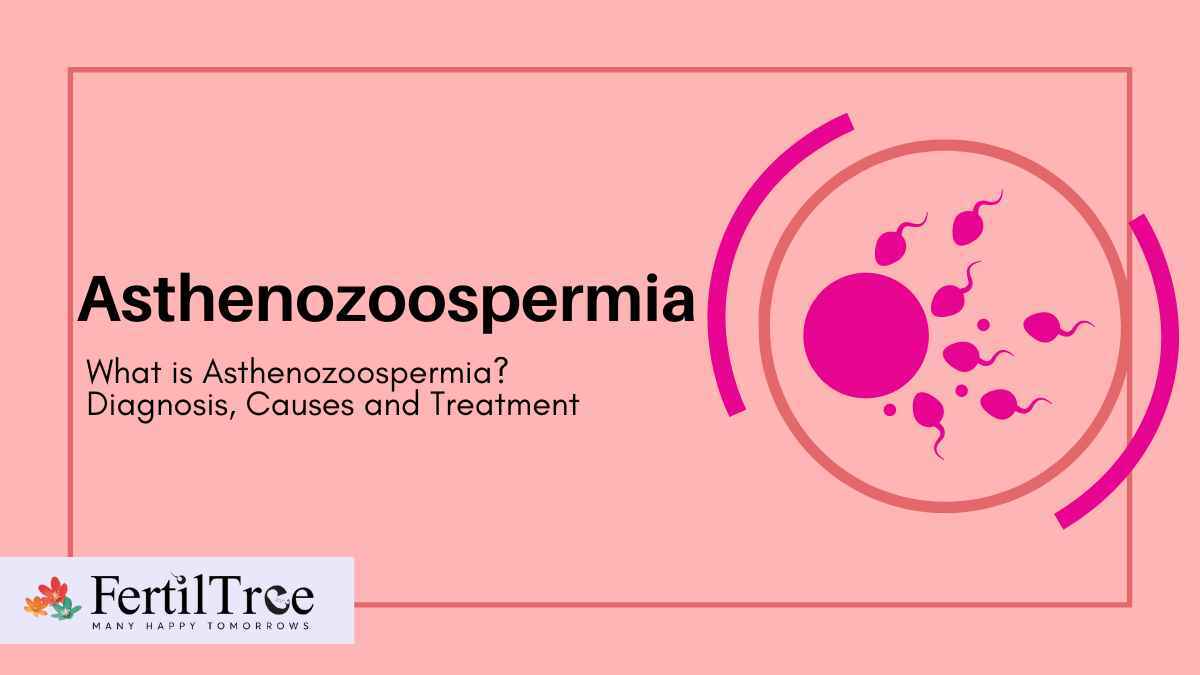
Asthenozoospermia ( or Asthenospermia) means suboptimal sperm motility. Motility is the ability of the sperm to move forward swiftly and in a straight manner. In other words, it also decreases the chances of sperm fertilizing the egg in the female reproductive tract.
Table of Content
Diagnosis Causes Treatment How is Asthenozoospermia and infertility related? FAQs It is accompanied by oligospermia which is also known as oligo asthenozoospermia. If 40% percent of sperm have low motility the sample is labeled as having asthenospermia. The sperm usually consists of three parts:- Head: Contains genetic material
- Midpiece: Build of cells that create energy to allow tail movements.
- Flagellum or tail : Assists in propelling the sperm in the right direction.;
How is Asthenozoospermia diagnosed?
The WHO Manual 5th Edition states that if the total percentage of all types of sperm motility is less than 40%, the sample has asthenozoospermia. The different types of motility are progressive motility, non-progressive motility and the absence of motility. If progressive motility is less than 32%, the semen sample has asthenozoospermia. Low motility may suggest that the sperm may not be able to fertilize the oocyte under normal conditions, and Assisted Reproductive Technology may be required. While evaluating the sperm for asthenospermia other sperm parameters are also evaluated. the quality, color, pH, and consistency of the semen, the presence of immature sperm, and the presence of yeast or bacteria. In addition, the shape of the sperm and the count are also evaluated. Since the ejaculated sperm needs to penetrate the cervical mucus in order to reach the uterus and ultimately the fallopian tube where the egg is waiting, sperm motility is very essential for the process of fertilisation.What are the causes of Asthenozoospermia?
Asthenospermia may be caused by genetic conditions, is associated with cystic fibrosis, due to pus cells and bacterial infections in the semen, may occur along with kidney disease, in the presence of varicocele and in men who smoke.Varicocele
It is a condition in which the scrotal veins enlarge and there is a backflow of blood. This increases some toxins in the surrounding of the testes resulting in asthenospermia.Abnormal Semen Liquefaction
In the absence of certain enzymes, the semen remains coagulated and this can decrease the sperm motility.Inflammation
Inflammation within the sperm duct, prostate gland and other parts of the reproductive system can result in low sperm motility. Thereby decreasing the ability of the perm to swim to the egg in order to fertilise it.Excessive Stress
A sedentary lifestyle may also contribute to asthenospermia.Vitamin and micronutrients deficiency
Deficiencies in Vitamin C, Vitamin B12 and Zinc may lead to low sperm motility.Excess Smoking & Drinking
Excessive amount of alcohol consumption and smoking may decrease sperm motility.What is the treatment for Asthenozoospermia?
The treatment of Asthenozoospermia depends on the cause. The presence of bacteria and pus cells can be treated with a course of antibiotics. Surgical correction of the Varicocele can improve sperm motility. Frequent ejaculation and avoiding long periods of abstinence also help. Sometimes sexual intercourse may cause an infection to spread from one partner to another. Use of appropriate systemic and local antibiotics for treating the female partner suffering from vaginal infection is useful. Processing of sperm through different techniques like swim up, Density gradient, microfluidics at the time of Intrauterine Insemination can be useful. When the motility is very low ICSI can be a good solution..How is Asthenozoospermia and infertility related?
Asthenozoospermia can contribute to male infertility. Sperm with low motility may have difficulty swimming through the vagina, the cervix and the uterus in order to reach the oocyte which is waiting to be fertilised in the fallopian tube. When the sperm are completely immotile, ICSI is the best form of treatment.FAQs About Asthenozoospermia
What are the possible treatments for Asthenozoospermia?
An appropriate treatment for Asthenozoospermia includes assisted reproduction techniques like IVF and ICSI. In ICSI the sperm is directly injected into the oocyte hence completing the 7 steps of fertilisation in the laboratory.Can the period of abstinence influence sperm motility?
Yes. It is strongly recommended not to have prolonged periods of abstinence in the presence of low sperm motility.Can I conceive naturally with Asthenozoospermia?
Even though the chances of natural conception decrease in the presence of asthenozoospermia, natural conception can occur occasionally.What are the symptoms of Asthenozoospermia?
There are no specific symptoms of Asthenozoospermia.What can you do in case of idiopathic Asthenozoospermia?
You can choose ICSI as an appropriate solution for idiopathic Asthenozoospermia.Is Asthenozoospermia hereditary?
Sometimes genetic mutations that can be passed from father to son giving rise to Asthenospermia.When is a semen sample said to have Asthenospermia?
World Health Organization Manual Edition V, mentions that a sample is considered to have Asthenospermia when the progressive motility is less than 32% and the total sperm motility is less than 40%, the total motility being the sum of progressive and non-progressive motility.Can frequent intercourse remain beneficial in moderate Asthenozoospermia?
Frequent ejaculation by sexual intercourse may be beneficial. However if there is accompanying oligospermia, the counts may diminish further with repeated frequent intercourse. Read more: Difference Between Azoospermia And OligospermiaBook A Consultation

